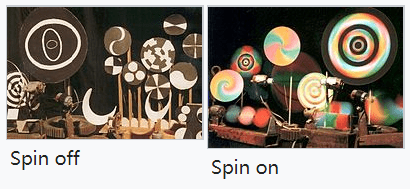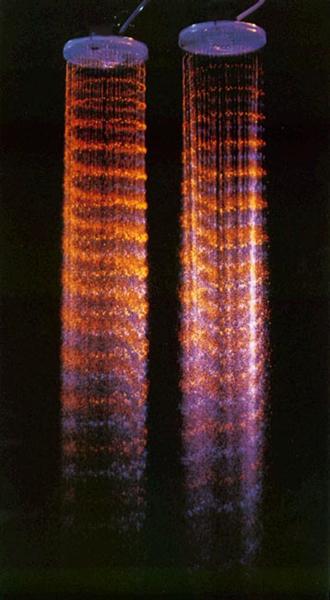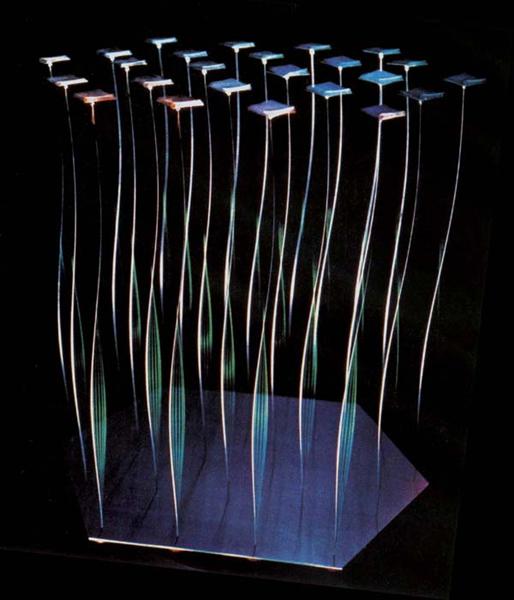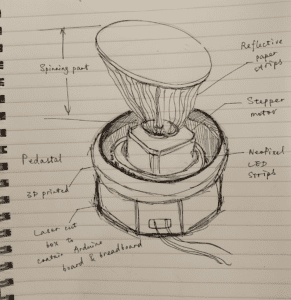Perspective and Context Paul Friedlander started out as a physicist. His career as a kinetic artist began when he was 36, before which he had worked as lighting and stage designer as well. Since childhood he has been interested in kinetic art involving the use of colors. His early works were mostly small scale sculptures – taking the ones shown below as an example, they are a bunch of black and white colored wheels, which display various colors when spun.

Just like the one above, many of his works utilize persistence of vision, which is a kind of physical phenomenon that has everything to do with the perception of light. Simply put, human visions are not exactly updated with time, and what one sees at this moment is going to remain in his vision for about 0.1 sec. This phenomenon enables us to perceive television as consistent images rather than discrete ones. Friedlander created these 3D light sculptures (shown below) making use of persistence of vision.

蔡文颖 (Wenying Cai) was a Chinese-born kinetic artist. He was most famous for his “cybernetic sculpture works” that incorporated stroboscopic light. In the pictures below is his best-known work “Upward-Falling Fountain”. It is said that depending on the frequency of the strobe light, the falling drips of water present different visual effects, either going upwards, downwards, or floating in the air.



Both artists had or have a physics background that allowed them to integrate relevant knowledge into their works. The two light sculpture projects that I briefly introduced above both produced visual illusions to distort viewers’ perception of light, and that is essentially how both artists are closely related to the concept of perceptions. Physics is a way that humans invented to understand the world as it is, but technically we are never going to see it for what it is, because there is and will always be a gap between the reality and our perception. Nevertheless, using physics principles, Friedlander and Tsai found places within this gap of illusion to base their art on.
Project Description

Above is a tentative design draft of the light sculpture project that I plan to build. It mainly consists of two parts – a pedestal containing one or multiple NeoPixel LED strips (source of light) and the circuit, and an upper part that spins with a stepper motor, reflects the light coming from below and produces dynamic shades of colors on the table. The audience would be able to see kinetic patterns produced by the reflective materials as they spin.
Production Schedule
4/30 Physical design finalized
5/02 Physical parts (3D printed ones and laser cut ones) all ready for assembling
5/07 Arduino coding done
5/09 Feedback session